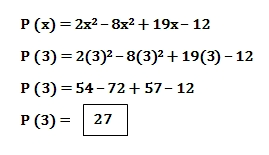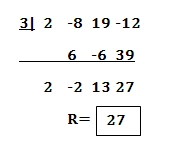Polynomial Factoring:
As in many fields, the manner in which we approach a problem In mathematics can greatly affect how we go about solving it. By finding the factors of a polynomial, we can more easily identify roots, divide polynomials, and simplify rational expressions. These are just a few examples that you may see in the classroom, but the applications of polynomial factoring are far-reaching.
All forms of polynomial factoring take advantage of the distributive property:
a(b+c) =ab + ac
Where a, b, and c can represent constants (3), variables (x), or even entire algebraic expressions (3x2 + 2x + 1).
By applying it in reverse. Unfortunately it is often difficult to identify possible values of ‘a’, and a fair bit of guesswork is required. This guesswork doesn’t need to be random however, as these simple tricks will help you narrow down your list of possible factors.
Tip 1. Start with easy guesses.
A constant factor (a), has one coefficient to determine, A degree-one factor(ax + b) has two A degree-two factor (ax2 + bx + c) has three, And so on. Larger degree factors become harder to determine, and to check, and most teachers aren’t mean enough to give a polynomial with no degree-one factors.
Tip 2. Look at the highest and lowest terms for guidance.
Let’s use a generic third order polynomial.
(r1 x +s1) * (r2 x +s2) * (r3 x +s3)
= (r1 r2 r3)x3 + (r1 r2 s3 + r1 s2 r3 + s1 r2 r3)x2 + (r1 s2 s3 + s1 r2 s3 + s1 s2 r3)x + (s1 s2 s3)
Before you run away screaming, notice that the first and last terms seem much simpler than the other two? In fact, this expansion tells us that the 3 ‘r’ values multiply to make the first term’s coefficient, and the 3 ‘s’ values multiply to make the last term.
Knowing this, we can save some time by starting with factors that make up the first and last term.
Tip 3. Synthetic division.
Another way that we can save time in the guess-and-check process is by reducing the time it takes to check our guesses. Synthetic division helps cut down on the time and space required for polynomial division by only writing coefficients, leaving the x’s out and focusing on the divide-multiply-subtract-bring over method. As always, if the remainder term is zero, you’ve found a factor.
Even with these tips, the most important key to success in polynomial factoring is perseverance. It may take a few tries to successfully factor a polynomial, but If you keep at it, it is a skill that you can easily master.






